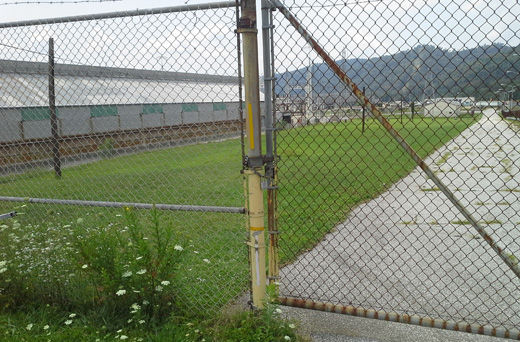
HANNIBAL, Ohio – The Niagara World-Wide company announced July 31 the final and permanent closing of the former Ormet Primary Aluminum Corporation’s plant near here. Along with the closing, Niagara fired the last twenty workers still employed at the former Ormet facility.
Ormet, including its property and assets, had been bought out by Niagara at a Chapter 11 bankruptcy auction sale held July 27, only a few days earlier.
Thursday’s announcement dashed any hope that the workers and their communities may have had that Ormet’s operations might be revived. At the time of the shutdown announcement, in addition to the final 20 workers, there were over 3,000 who had already been laid off and another 1,000 Ormet retirees.
Not only did Ormet’s workers rely on the company for a decent living but the economies of Ohio River communities in Monroe County, Ohio and in Wetzel County, West Virginia hung on the company’s survival.
Aside from small aggregate (stone) operation, a few stores and gas stations Ormet was essentially the sole employer in the Monroe County river towns of Clarington and Hannibal. It was also a major part of the economy of New Martinsville, West Virginia (population 5,366), which lies just across the Ohio River from the Ormet plant.
Ormet began its Hannibal plant in 1955 and its reduction plant began producing aluminum in 1956. At its peak, the Hannibal plant’s six lines could produce 270,000 tons of aluminum per year but those were the good old days. During the sixties and seventies, the union gained wages and benefits that were top of the line, following only slightly Basic Steel’s master agreement. Ormet’s workers were organized into Local Union 5724 [LU 5724] of the United Steelworkers of America, AFL-CIO-CLC [USWA].
The Ormet workers have had a long and troubled history with that company, particularly during the years when Emmett Boyle reigned as the corporation’s CEO.
His lockout of Ormet’s workers and arrests of their union leaders in the 1980s was so egregious that it even inspired a popular labor protest song, One Day More, sung by Elaine Purkey on Smithsonian’s Classic Labor Songs album. There was also a long strike at the beginning of the new century (2002-2003)-again under Boyle’s reign at Ormet.
Ormet’s final economic troubles, however, began with falling aluminum prices along with the rising cost of the electricity needed to run the Ormet operation. Under the previous Ohio governor, Democrat Ted Strickland, the employees were able to work with the company, the Ohio Public Utilities Commission and Appalachian Electric Power Company to save the plant.
The union and its workers did more than their part by modifying their labor agreement calling for drastic cuts in “legacy costs”-in pensions and retiree health benefits. Drastic give-backs, however, were not enough in the long run because the company returned for another bite at the apple by claiming it could no longer operate at AEP’s present utility rate of $16 million per month – the amount the utility was charging to operate all six lines at Ormet.
This latest crisis happened under the watch of Ohio’s new governor, Republican John Kasich, who became infamous for his efforts to bust the state’s public employee unions. Despite many pleas from the Ormet workers and their union to Gov. Kasich, he failed not only to intervene but refused to talk with the union or even show up at the Ormet site.
According to John Saunders (USWA Staff Representative assigned to serve the membership employed at Ormet), Kasich’s reported comments were that the business plan for Ormet was not strong enough to survive in the ups and downs of the present day aluminum market.
After interviewing John Saunders, this reporter headed down river to photograph the idle plant and talk with Tom Byers, President of LU 5724. When I arrived, he was preparing to close the local’s Clarington office but he took time out for an interview and a brief lunch on a bag of chips.
As I left his office, Tom sadly shook his head and said that today, August 1, was a day he thought he’d never live to see-the day when his union building and local would close for good.
Photo: John R. Milam/PW










